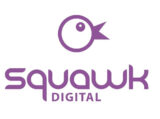Maximizing ROI with Pay-Per-Click (PPC) Advertising Pay-Per-Click (PPC) advertising has emerged as a cornerstone of digital marketing, offering businesses the ability to achieve instant visibility, drive targeted traffic, and generate measurable results. However, realizing a strong Return on Investment (ROI) from PPC campaigns requires more than just running ads. It demands strategic planning, a deep understanding of audience behavior, and a commitment to continual optimization. This article explores detailed strategies to help businesses maximize ROI from their PPC efforts. Define Clear Campaign Goals The foundation of any successful PPC campaign lies in having well-defined goals. These objectives serve as the guiding light for every decision, from platform selection to budget allocation. For instance, if your primary aim is to increase sales, your strategy will differ significantly from a campaign focused on building brand awareness or generating leads. By aligning your goals with measurable Key Performance Indicators (KPIs) such as Cost Per Conversion (CPC), Click-Through Rate (CTR), or overall Conversion Rate, you can track progress effectively. Establishing these metrics upfront ensures that you have clear benchmarks to measure the success of your campaign. Target the Right Audience PPC advertising offers unparalleled precision in audience targeting. To make the most of this feature, businesses should leverage demographic data and user behaviors to refine their reach. Targeting parameters can include: Geographic location Age and gender demographics Interests and preferences Online behavior patterns Additionally, implementing retargeting campaigns can significantly boost ROI by re-engaging users who visited your site but did not convert. Retargeting keeps your brand top-of-mind, encouraging users to take action when they are ready to make a decision. Conduct Comprehensive Keyword Research Keywords are the backbone of any PPC campaign. Conducting thorough keyword research ensures that your ads appear for queries that are relevant to your business. Tools like Google Keyword Planner or SEMrush can help identify high-intent keywords—phrases that indicate a user is ready to take action. Incorporating long-tail keywords into your campaigns can also prove beneficial. These phrases often have lower competition and higher relevance, making them more cost-effective. Equally important is the use of negative keywords to filter out irrelevant traffic, ensuring that your ads only appear for searches aligned with your objectives. Create Compelling Ad Copy The effectiveness of a PPC campaign heavily relies on the quality of the ad copy. A well-crafted ad should grab attention, clearly convey the value proposition, and prompt the user to take action. Elements such as a captivating headline, persuasive body text, and a strong call-to-action (CTA) are essential. For example, if you’re promoting a limited-time discount, your ad copy could include phrases like “Exclusive Offer” or “Limited Time Only” to create a sense of urgency. Pairing these elements with visually engaging assets, such as eye-catching images or videos, can further enhance click-through rates and overall ad performance. Optimize Landing Pages Driving traffic to your website is only half the battle. Ensuring that your landing page aligns with the user’s expectations and provides a seamless experience is critical for conversions. A well-optimized landing page should: Be directly relevant to the ad Load quickly to avoid user drop-off Feature a clear and compelling CTA Be mobile-friendly to cater to on-the-go users Conducting A/B testing on different landing page elements, such as headlines, CTAs, and layout designs, can help identify what resonates most with your audience, leading to higher conversion rates. Monitor and Adjust in Real-Time PPC campaigns are dynamic by nature. Regular monitoring is essential to identify what’s working and what needs adjustment. Key performance areas to track include: Ad performance metrics like CTR and Quality Score Conversion tracking to measure goal completions Budget utilization to ensure cost-efficiency Using automation tools to adjust bids, pause underperforming ads, or allocate more resources to high-performing campaigns can significantly enhance efficiency. Real-time adjustments keep your campaigns agile and responsive to changes in audience behavior or market conditions. Leverage Analytics for Continuous Improvement Data analytics is the cornerstone of maximizing ROI in PPC campaigns. Platforms like Google Ads provide detailed insights into campaign performance, allowing businesses to: Track and analyze conversion rates Identify top-performing keywords and ads Optimize bidding strategies based on historical data By conducting regular performance reviews, businesses can implement data-driven adjustments that improve outcomes over time. For example, if analytics reveal that certain keywords consistently generate high conversions, you can prioritize those terms in future campaigns. Set a Realistic Budget and Allocate Wisely Achieving a high ROI doesn’t always require a large budget; it’s about spending strategically. Setting a realistic budget based on your campaign goals and allocating funds to the best-performing areas ensures maximum efficiency. Smart bidding strategies, such as Target ROAS (Return on Ad Spend), can further optimize budget utilization by automatically adjusting bids to achieve desired outcomes. This approach helps businesses focus their spending where it matters most, enhancing overall campaign performance. Conclusion Maximizing ROI with PPC advertising is a continuous process that combines strategic planning, meticulous execution, and constant refinement. By defining clear goals, targeting the right audience, crafting compelling ads, and leveraging data analytics, businesses can unlock the full potential of PPC campaigns. Whether you’re a small business or a large enterprise, these strategies can help you drive meaningful results and achieve sustained growth. For businesses seeking expert guidance and results-driven strategies, partnering with a specialized digital marketing agency can make all the difference. Digital Marketing Agencies like Squawk Digital have a proven track record of delivering tailored PPC solutions that drive measurable success. With their expertise, you can take your digital marketing campaigns to the next level, ensuring your goals are met with precision and efficiency.
Maximizing ROI with Pay-Per-Click (PPC) Advertising Read More »

